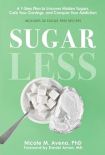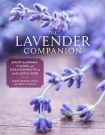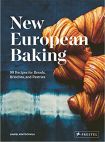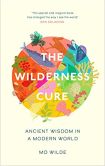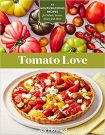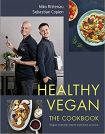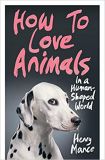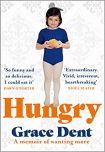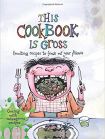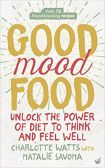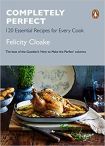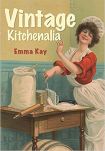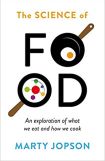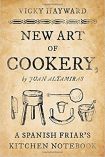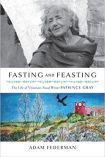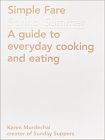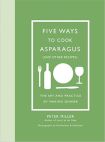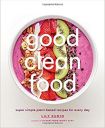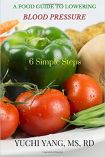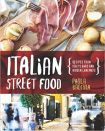Difference between revisions of "Newest Cookery Reviews"
| (92 intermediate revisions by the same user not shown) | |||
| Line 1: | Line 1: | ||
[[Category:Cookery|*]] | [[Category:Cookery|*]] | ||
| − | [[Category:New Reviews|Cookery]] | + | [[Category:New Reviews|Cookery]]__NOTOC__ <!-- Remove --> |
| − | + | {{Frontpage | |
| − | __NOTOC__ | + | |isbn=1454955546 |
| − | {{ | + | |title=Sugarless |
| − | | | + | |author=Nicole M Avena |
| − | |title= | + | |rating=5 |
| − | |rating= | + | |genre=Lifestyle |
| − | |genre= | + | |summary=''This isn't a diet book. The last thing anyone needs is another diet book.'' |
| − | |summary= | ||
| − | |||
| − | |||
| − | + | There was a time, not that long ago, when it was thought that sugary food was better for you than food with high-fat content. Fat was the demon food which was going to elevate your cholesterol and cause heart disease. Sugar was a carbohydrate, so good. There's a problem, though. Sugar is addictive and can hijack your brain in much the same way as drugs like heroin and cocaine. Does that sound over the top? Well, it isn't. | |
| − | |||
| − | |||
| − | |||
| − | |||
| − | |||
| − | |||
}} | }} | ||
| − | + | <!-- INSERT NEW REVIEWS BELOW HERE--> | |
| − | {{ | + | {{Frontpage |
| − | | | + | |isbn=1635866847 |
| − | |title= | + | |title=The Lavender Companion |
| − | |rating=5 | + | |author=Jessica Dunham and Terry Barlin Vesci |
| − | |genre= | + | |rating=4.5 |
| − | |summary= | + | |genre=Lifestyle |
| − | + | |summary=It's strange, the things that make you ''immediately'' feel that this is the book for you. Before I started reading ''The Lavender Companion'', I visited the author's [https://www.pinelavenderfarm.com/ website] and there's a picture of a slice of chocolate cake on the homepage. I don't eat cakes and desserts - but I wanted that cake viscerally. (There's a recipe in the book, which I'm avoiding with some difficulty!!) Then I started reading the book and I was told to make a mess of it. Notes in the margins are sanctioned. You get to fold down the corners of pages. You suspect that smears of butter would not be a problem. I ''loved'' this book already. | |
}} | }} | ||
| − | + | {{Frontpage | |
| − | {{ | + | |isbn=3791388398 |
| − | | | + | |title=New European Baking: 99 Recipes for Breads, Brioches and Pastries |
| − | |title= | + | |author=Laurel Kratochvila |
| − | |rating=4 | + | |rating=4.5 |
|genre=Cookery | |genre=Cookery | ||
| − | |summary= | + | |summary=This is probably one of the most unusual baking books I've encountered. It's built around 99 recipes for breads, brioches and pastries but the recipes are interwoven with some thought-provoking writing on how bread - and baking - have changed in the twentieth and early twenty-first centuries. We start with the basics - the equipment you'll need (there's nothing extravagant or indulgent) and the ingredients, where the author is particular. You might not have realised that different salts can change the flavour and sensation on the tongue of the finished product but, apparently, they do. |
| − | |||
}} | }} | ||
| − | + | {{Frontpage | |
| − | {{ | + | |isbn=1398508632 |
| − | | | + | |title=The Wilderness Cure |
| − | |title= | + | |author=Mo Wilde |
| − | |rating= | + | |rating=5 |
| − | |genre= | + | |genre=Lifestyle |
| − | |summary= | + | |summary=It had been on the cards for a while but it was the week-long consumer binge which pushed Mo Wilde into beginning her year of eating only wild food. The end of November, particularly in Central Scotland was perhaps not the best time to start, in a world where the normal sores had been exacerbated by climate change, Brexit and a pandemic. Wilde had a few advantages: the area around her was a known habitat with a variety of terrains. She had electricity which allowed her to run a fridge, freezer and dehydrator. She had a car - and fuel. Most importantly, she had shelter: this was not a plan to ''live'' wild just to live off its produce. |
| − | |||
}} | }} | ||
| − | + | {{Frontpage | |
| − | {{ | + | |isbn=1635864674 |
| − | | | + | |title=Tomato Love: 44 Mouthwatering Recipes for Salads, Sauces, Stews, and More |
| − | |title= | + | |author=Joy Howard |
|rating=4 | |rating=4 | ||
|genre=Cookery | |genre=Cookery | ||
| − | |summary= | + | |summary=''Think of it as no-whining dining.'' |
| − | |||
| − | |||
| − | + | We know it's a fruit rather than a vegetable but the fact that so many people get confused just goes to show how versatile the tomato is. Then there are all the different types, not to mention the cultivars - and you begin to understand why Joy Howard says that she hasn't met one she didn't love. I'd argue with her there - I have no affection for the ones you find in the supermarket ''next'' to the ones labelled 'grown for flavour' to distinguish them from the ones that have obviously just been grown for profit. Personally, I'd prefer a tin of tomatoes to those - and Howard makes good use of these. She's not at all precious if you get the taste. | |
| − | |||
| − | |||
| − | |||
| − | |||
| − | |||
| − | |||
}} | }} | ||
| − | + | {{Frontpage | |
| − | {{ | + | |isbn=0241480442 |
| − | | | + | |title=Healthy Vegan The Cookbook: Vegan Cooking Meets Nutrition Science |
| − | |title= | + | |author=Niko Rittenau and Sebastian Copien |
| − | |rating=4 | + | |rating=4.5 |
|genre=Cookery | |genre=Cookery | ||
| − | |summary= | + | |summary=Emotionally, I am a vegan. Mentally, I am a vegan. I read [[How to Love Animals in a Human-Shaped World by Henry Mance]] and was appalled by the way in which we treat animals in our search for (preferably cheap) food. Practically, I am not a vegan. It worked for a while apart from the odd blip with regard to cheese but then a perfect storm of those events which you hope don't occur too often in your lifetime tempted me back to animal-based protein. It wasn't the taste - I know that I can get plant-based food that tastes just as good as anything plundered from the animal kingdom - it was the ease of being able to get sufficient protein when meals were often snatched in a few spare moments. |
| − | |||
}} | }} | ||
| − | + | {{Frontpage | |
| − | {{ | + | |isbn=1529418100 |
| − | | | + | |title=Bruno's Challenge and Other Dordogne Tales |
| − | |title= | + | |author=Martin Walker |
|rating=4 | |rating=4 | ||
| − | |genre= | + | |genre=Short Stories |
| − | |summary= | + | |summary=I'm not usually a fan of short stories - I find it all too easy to put the book down between stories and forget to pick it up again - but I am a fan of Martin Walker's [[Martin Walker's Commissar Bruno Courreges Mysteries in Chronological Order|Bruno Courreges Mysteries]] so the temptation to read ''Bruno's Challenge'' was hard to resist and I'm rather glad that I didn't even try. For those new to the series, there's an excellent introduction that will tell you all you need to know about who's who and the background to why Bruno is in St Denis. |
| − | |||
}} | }} | ||
| − | + | {{Frontpage | |
| − | {{ | + | |isbn=1787332098 |
| − | | | + | |title=How to Love Animals in a Human-Shaped World |
| − | |title= | + | |author=Henry Mance |
|rating=5 | |rating=5 | ||
| − | |genre= | + | |genre=Politics and Society |
| − | |summary= | + | |summary=''When we do think about animals, we break them down into species and groups: cows, dogs, foxes, elephants and so on. And we assign them places in society: cows go on plates, dogs on sofas, foxes in rubbish bins, elephants in zoos, and millions of wild animals stay out there, ''somewhere,'' hopefully on the next David Attenborough series.'' |
| − | |||
| − | |||
| − | + | I was going to argue. I mean, cows are for cheese (I couldn't consider eating red meat...) and I much prefer my elephants in the wild but then I realised that I was quibbling for the sake of it. Essentially that quote sums up my attitude to animals - and I consider myself an animal lover. If I had to choose between the company of humans and the company of animals, I would probably choose the animals. I insisted that I read this book: no one was trying to stop me but I was initially reluctant. I eat cheese, eggs, chicken and fish and I needed to either do so without guilt or change my choices. I suspected that making the decision would not be comfortable. | |
| − | |||
| − | |||
| − | |||
| − | |||
| − | |||
| − | |||
}} | }} | ||
| − | + | {{Frontpage | |
| − | {{ | + | |isbn=0008333173 |
| − | | | + | |title=Hungry: A Memoir of Wanting More |
| − | |title= | + | |author=Grace Dent |
| − | |rating= | + | |rating=5 |
|genre=Autobiography | |genre=Autobiography | ||
| − | |summary= | + | |summary=I'm always relieved when Grace Dent is one of the judges on ''Masterchef''. You know that you're going to get an honest opinion from someone whom you sense does real food rather than fine dining most of the time. You also ponder on how she can look so elegant with all that good food in front of her. I've often wondered about the woman behind the media image and ''Hungry: A Memoir of Wanting More'' is a stunning read which will make you laugh and break your heart in equal measures. |
| − | |||
| − | |||
| − | |||
| − | |||
| − | |||
| − | |||
| − | |||
| − | |||
| − | |||
| − | |||
}} | }} | ||
| − | + | {{Frontpage | |
| − | {{ | + | |isbn=Tee_Gross |
| − | | | + | |title=This Cookbook is Gross |
| − | |title= | + | |author=Susanna Tee and Santy Gutierrez |
| − | |||
| − | |||
| − | |||
| − | |||
| − | |||
| − | |||
| − | |||
| − | |||
| − | |||
| − | |||
| − | |author= | ||
| − | |||
|rating=4 | |rating=4 | ||
| − | |genre= | + | |genre=Children's Non-Fiction |
| − | |summary= | + | |summary=The misuse of language is a modern disease. Too many times something is described as awesome or stupendous, but were you truly awed by it? Or stupefied? People just seem to pluck words out of the ether and pretend that they are the correct ones. Are the recipes in Susanna Tee and Santy Gutierrez's 'This Cookbook is Gross' truly gross? For once the language is not overplayed. These recipes may taste nice, but in appearance, they are absolutely vile. |
| − | |||
}} | }} | ||
| − | {{ | + | {{Frontpage |
| − | | | + | |isbn=1848993609 |
| − | |title= | + | |title=Good Mood Food: Unlock the Power of Diet to Think and Feel Well |
| + | |author=Charlotte Watts and Natalie Savona | ||
|rating=4.5 | |rating=4.5 | ||
|genre=Cookery | |genre=Cookery | ||
| − | |summary=I | + | |summary=I thought I was getting a cookbook: I liked the idea of a series of recipes which would make me feel happy. For once this isn't a case of 'if it sounds too good to be true, it probably is' - it's a case of getting something which could change your life for the better - for good - rather than a quick fix. |
| − | |||
}} | }} | ||
| − | + | {{Frontpage | |
| − | {{ | + | |isbn=0241367875 |
| − | | | + | |title=Completely Perfect: 120 Essential Recipes for Every Cook |
| − | |title= | + | |author=Felicity Cloake |
| − | + | |rating=5 | |
| − | |||
| − | |||
| − | |||
| − | |||
| − | |||
| − | |||
| − | |author= | ||
| − | |||
| − | |rating= | ||
| − | |||
| − | |||
| − | |||
| − | |||
| − | |||
| − | |||
| − | |||
| − | |||
| − | |||
|genre=Cookery | |genre=Cookery | ||
| − | |summary= | + | |summary=It's a novel concept for a cookery book: these are not Felicity Cloake's recipes but the best ones she found to do a particular job - the job of delivering the best meal, the ''Completely Perfect'' meal of the title. Think of it as the equivalent of a comparison site for when you want to renew the car insurance and then taking the best elements out of each recipe to make perfection. There's nothing cutting edge here: it's the sort of food which we've been eating for decades and probably will be for decades to come. There's a reason for that: roast chicken followed by apple crumble ''works'' and providing that you don't have a vegetarian or a vegan at table, it's a meal which is unlikely to do other than go down well. |
| − | |||
}} | }} | ||
| − | + | {{Frontpage | |
| − | + | |isbn=Kay Vintage | |
| − | + | |title=Vintage Kitchenalia | |
| − | + | |author=Emma Kay | |
| − | |||
| − | |||
| − | |||
| − | |||
| − | |||
| − | |||
| − | {{ | ||
| − | | | ||
| − | |title= | ||
| − | |||
| − | |||
| − | |||
| − | |||
| − | |||
| − | |||
| − | |||
| − | |author= | ||
| − | |||
|rating=3.5 | |rating=3.5 | ||
|genre=Cookery | |genre=Cookery | ||
| − | |summary=I | + | |summary=Over the half-century and more that I've been preparing meals on a regular basis I've seen food preparation move from being just something you did to an obsession akin to a religion. My first kitchen had nothing in the way of luxury - it was there to make meals as nutritiously and economically as possible: my current kitchen is not ''quite'' state of the art, but it's equipped to a high standard and is a pleasure to work in. But what of all the equipment which went before, which paved the way to what we have now? Emma Kay is going to give you a quick trip through the history. |
| − | |||
}} | }} | ||
| − | + | {{Frontpage | |
| − | {{ | + | |isbn=Jopson_Science |
| − | | | + | |title=The Science of Food: An exploration of what we eat and how we cook |
| − | |title= | + | |author=Marty Jopson |
|rating=4 | |rating=4 | ||
|genre=Cookery | |genre=Cookery | ||
| − | |summary=I | + | |summary=I've always believed that if you understood ''why'' something worked in a particular way it was very easy to remember ''how'' it worked and what you needed to do. The food we eat is no exception to this rule and ''The One Show'' resident scientist Marty Jopson has undertaken to explain how things work in the kitchen - and he covers everything from the type of knives we use through to the food of the future. Best of all, he does it in language that even a science illiterate like me can understand. |
| − | |||
| − | |||
| − | |||
| − | |||
| − | |||
| − | |||
| − | |||
| − | |||
| − | |||
| − | |||
}} | }} | ||
| − | + | {{Frontpage | |
| − | {{ | + | |isbn=Hayward New |
| − | | | + | |title=Juan Altamiras' New Art of Cookery: A Spanish Friar's Kitchen Notebook |
| − | |title= | + | |author=Vicky Hayward |
|rating=4 | |rating=4 | ||
|genre=Cookery | |genre=Cookery | ||
| − | |summary= | + | |summary=In 1745 a Spanish friary cook, Juan Altamiras, published the first edition of his ''New Art of Cookery, Drawn From the School of Economic Experience''. It contained more than two hundred recipes for meat, poultry, game, salted and fresh fish, vegetables and desserts. The style was informal, chatty and humorous on occasions and it was aimed, not at those who could afford to cook on a grand scale, but at those with more modest budgets, who sometimes needed to cook for large numbers. Whilst the ingredients were - for the most part - modestly priced there is a stress on the careful combination of flavours and aromas. Spices are used conservatively and the bluntness of some Moorish cooking is eschewed in favour of something much more subtle and we see influences from Altamiras' own region, Aragon, the Iberian court and the New World. |
| − | |||
}} | }} | ||
| − | + | {{Frontpage | |
| − | {{ | + | |isbn=Federman_Fasting |
| − | | | + | |title=Fasting and Feasting - The Life of Visionary Food Writer Patience Gray |
| − | |title= | + | |author=Adam Federman |
|rating=4 | |rating=4 | ||
|genre=Cookery | |genre=Cookery | ||
| − | |summary= | + | |summary=For more than thirty years, Patience Gray--author of the celebrated cookbook Honey from a Weed--lived in a remote area of Puglia in southernmost Italy. She lived without electricity, modern plumbing, or a telephone, grew much of her own food, and gathered and ate wild plants alongside her neighbours in this economically impoverished region. She was fond of saying that she wrote only for herself and her friends, yet her growing reputation brought a steady stream of international visitors to her door. This simple and isolated life she chose for herself may help explain her relative obscurity when compared to the other great food writers of her time: M. F. K. Fisher, Elizabeth David, and Julia Child. So it is not surprising that when Gray died in 2005, the BBC described her as an ''almost forgotten culinary star.'' Yet her influence, particularly among chefs and other food writers, has had a lasting and profound effect on the way we view and celebrate good food and regional cuisines. Gray's prescience was unrivalled: She wrote about what today we would call the Slow Food movement--from foraging to eating locally--long before it became part of the cultural mainstream. |
| − | |||
| − | |||
| − | |||
| − | |||
| − | |||
| − | |||
| − | |||
| − | |||
| − | |||
| − | |||
| − | |||
| − | |||
| − | |||
| − | |||
| − | |||
| − | |||
| − | |||
| − | |||
| − | |||
}} | }} | ||
| − | + | {{Frontpage | |
| − | {{ | + | |isbn=Mordechai_Simple |
| − | | | + | |title=Simple Fare: Spring and Summer |
| − | |title= | + | |author=Karen Mordechai |
|rating=4 | |rating=4 | ||
|genre=Cookery | |genre=Cookery | ||
| − | |summary= | + | |summary=Karen Mordechai's family history has its roots in the Jerusalem of the 1950s when people from around the globe were coming together in a young country and forming their own way of living. When the family then emigrated to the United States they brought this way of cooking with them, along with the tradition of sharing and enjoying food. Mordechai believes that food's ability to bring people together is unparalleled and that the food you make is a compilation of the way you have lived. Thinking back over the food we eat, that is so true and for the first time, I looked on a recipe book as an elegant way of seeing someone else's history. |
| − | |||
}} | }} | ||
| − | + | {{Frontpage | |
| − | {{ | + | |isbn=Miller_Five |
| − | | | + | |title=Five Ways to Cook Asparagus (and Other Recipes): the Art and Practice of Making Dinner |
| − | |title= | + | |author=Peter Miller |
|rating=5 | |rating=5 | ||
|genre=Cookery | |genre=Cookery | ||
| − | |summary= | + | |summary=When you've been producing meals for around about half a century the chances are that, like me, you have a fairly regular set of menus which you produce. Hopefully, it's not quite in the 'fishcakes! Goodness is it Friday already?' realm but you probably have something in your culinary locker for every occasion. It takes a very good book to make you settle down and actually read what it has to offer and it's an exceptional one where you end up with lots of dog-eared pages for recipes which you're going to try. The inspiration to read ''Five Ways to Cook Asparagus'' was simple and serendipitous - I'd just come home with the first of the season's English asparagus when the book arrived in the post. I couldn't ''not'' have a look, now could I? |
| − | |||
}} | }} | ||
| − | + | {{Frontpage | |
| − | {{ | + | |isbn=Kunin_Good |
| − | | | + | |title=Good Clean Food: Plant-Based Recipes That Will Help You Look and Feel Your Best |
| − | |title= | + | |author=Lily Kunin |
|rating=4 | |rating=4 | ||
| − | |||
| − | |||
| − | |||
| − | |||
| − | |||
| − | |||
| − | |||
| − | |||
| − | |||
|genre=Cookery | |genre=Cookery | ||
| − | |summary= | + | |summary=I've got to begin by outlining a bias: I don't like food fads. There's a very good reason for avoiding gluten if you are coeliac, but if it's simply a food choice then you make life more difficult for people who ''must'' avoid gluten. The same point applies to a lot of other food 'intolerances'. I believe in eating a balanced diet but will happily admit that I have my own no-go areas: I don't eat processed sugars because they're empty calories and after a couple of weeks without them I discovered that I don't actually like the taste. I don't touch caffeine and haven't done so since I discovered what it did to my blood pressure. Having said all this, I'm quite happy to read books which ''do'' advocate avoiding certain food groups, simply because (a) there ''might'' be something in it and (b) people who've had to the inventive to create a varied diet with restricted ingredients often come up with some excellent recipes. And that was how I came to ''Good Clean Food''. |
| − | |||
}} | }} | ||
| − | + | {{Frontpage | |
| − | {{ | + | |isbn=Yang_Food |
| − | | | + | |title=A Food Guide to Lowering Blood Pressure: 6 Simple Steps |
| − | |title= | + | |author=Yuchi Yang |
|rating=4 | |rating=4 | ||
|genre=Cookery | |genre=Cookery | ||
| − | |summary= | + | |summary=Yuchi Yang has been a registered dietitian for over twenty years and she's allowing us the benefit of her knowledge to help us to reduce our blood pressure ''without'' taking medication, although she does stress that if you ''are'' taking medication you shouldn't stop doing so without consulting your doctor. You can reduce your BP in six steps, which are actually a lot simpler than they sound. Does it work? Yes, it does: I've been eating this way for more than two years and I've gone from having 'very worrying' blood pressure readings to getting a smile when they're taken and being told that my BP is perfectly normal - and that's without taking medication of any sort. |
| − | |||
}} | }} | ||
| − | + | {{Frontpage | |
| − | {{ | + | |isbn=Bacchia_Italian |
| − | | | + | |title=Italian Street Food |
| − | |title= | + | |author=Paola Bacchia |
|rating=4 | |rating=4 | ||
|genre=Cookery | |genre=Cookery | ||
| − | |summary= | + | |summary=Books about Italian food are everywhere, with recipes for pizza, pasta dishes and all the usual suspects. In a winter which seems to be starting hard all too early what I wanted was sunshine - and the sort of food which you find on the Italian streets and in those bars which only the locals know about. It's the sort of food which you eat on the move, or leaning against the bar - tables and chairs don't usually come into the equation. For the most part, it doesn't aspire to being ''healthy'' - frying plays a larger part than it does in a virtuous diet and it is a little short on fruit and veg - but we can all be a bit naughty on occasions, can't we? |
| − | |||
}} | }} | ||
| − | + | Move on to [[Newest Crafts Reviews]] | |
| − | |||
| − | |||
| − | |||
| − | |||
| − | |||
| − | |||
| − | |||
Latest revision as of 09:32, 12 December 2023
Review ofSugarless by Nicole M AvenaThis isn't a diet book. The last thing anyone needs is another diet book. There was a time, not that long ago, when it was thought that sugary food was better for you than food with high-fat content. Fat was the demon food which was going to elevate your cholesterol and cause heart disease. Sugar was a carbohydrate, so good. There's a problem, though. Sugar is addictive and can hijack your brain in much the same way as drugs like heroin and cocaine. Does that sound over the top? Well, it isn't. Full Review |
Review ofThe Lavender Companion by Jessica Dunham and Terry Barlin VesciIt's strange, the things that make you immediately feel that this is the book for you. Before I started reading The Lavender Companion, I visited the author's website and there's a picture of a slice of chocolate cake on the homepage. I don't eat cakes and desserts - but I wanted that cake viscerally. (There's a recipe in the book, which I'm avoiding with some difficulty!!) Then I started reading the book and I was told to make a mess of it. Notes in the margins are sanctioned. You get to fold down the corners of pages. You suspect that smears of butter would not be a problem. I loved this book already. Full Review |
Review ofNew European Baking: 99 Recipes for Breads, Brioches and Pastries by Laurel KratochvilaThis is probably one of the most unusual baking books I've encountered. It's built around 99 recipes for breads, brioches and pastries but the recipes are interwoven with some thought-provoking writing on how bread - and baking - have changed in the twentieth and early twenty-first centuries. We start with the basics - the equipment you'll need (there's nothing extravagant or indulgent) and the ingredients, where the author is particular. You might not have realised that different salts can change the flavour and sensation on the tongue of the finished product but, apparently, they do. Full Review |
Review ofThe Wilderness Cure by Mo WildeIt had been on the cards for a while but it was the week-long consumer binge which pushed Mo Wilde into beginning her year of eating only wild food. The end of November, particularly in Central Scotland was perhaps not the best time to start, in a world where the normal sores had been exacerbated by climate change, Brexit and a pandemic. Wilde had a few advantages: the area around her was a known habitat with a variety of terrains. She had electricity which allowed her to run a fridge, freezer and dehydrator. She had a car - and fuel. Most importantly, she had shelter: this was not a plan to live wild just to live off its produce. Full Review |
Review ofTomato Love: 44 Mouthwatering Recipes for Salads, Sauces, Stews, and More by Joy HowardThink of it as no-whining dining. We know it's a fruit rather than a vegetable but the fact that so many people get confused just goes to show how versatile the tomato is. Then there are all the different types, not to mention the cultivars - and you begin to understand why Joy Howard says that she hasn't met one she didn't love. I'd argue with her there - I have no affection for the ones you find in the supermarket next to the ones labelled 'grown for flavour' to distinguish them from the ones that have obviously just been grown for profit. Personally, I'd prefer a tin of tomatoes to those - and Howard makes good use of these. She's not at all precious if you get the taste. Full Review |
Review ofHealthy Vegan The Cookbook: Vegan Cooking Meets Nutrition Science by Niko Rittenau and Sebastian CopienEmotionally, I am a vegan. Mentally, I am a vegan. I read How to Love Animals in a Human-Shaped World by Henry Mance and was appalled by the way in which we treat animals in our search for (preferably cheap) food. Practically, I am not a vegan. It worked for a while apart from the odd blip with regard to cheese but then a perfect storm of those events which you hope don't occur too often in your lifetime tempted me back to animal-based protein. It wasn't the taste - I know that I can get plant-based food that tastes just as good as anything plundered from the animal kingdom - it was the ease of being able to get sufficient protein when meals were often snatched in a few spare moments. Full Review |
Review ofBruno's Challenge and Other Dordogne Tales by Martin WalkerI'm not usually a fan of short stories - I find it all too easy to put the book down between stories and forget to pick it up again - but I am a fan of Martin Walker's Bruno Courreges Mysteries so the temptation to read Bruno's Challenge was hard to resist and I'm rather glad that I didn't even try. For those new to the series, there's an excellent introduction that will tell you all you need to know about who's who and the background to why Bruno is in St Denis. Full Review |
Review ofHow to Love Animals in a Human-Shaped World by Henry ManceWhen we do think about animals, we break them down into species and groups: cows, dogs, foxes, elephants and so on. And we assign them places in society: cows go on plates, dogs on sofas, foxes in rubbish bins, elephants in zoos, and millions of wild animals stay out there, somewhere, hopefully on the next David Attenborough series. I was going to argue. I mean, cows are for cheese (I couldn't consider eating red meat...) and I much prefer my elephants in the wild but then I realised that I was quibbling for the sake of it. Essentially that quote sums up my attitude to animals - and I consider myself an animal lover. If I had to choose between the company of humans and the company of animals, I would probably choose the animals. I insisted that I read this book: no one was trying to stop me but I was initially reluctant. I eat cheese, eggs, chicken and fish and I needed to either do so without guilt or change my choices. I suspected that making the decision would not be comfortable. Full Review |
Review ofHungry: A Memoir of Wanting More by Grace DentI'm always relieved when Grace Dent is one of the judges on Masterchef. You know that you're going to get an honest opinion from someone whom you sense does real food rather than fine dining most of the time. You also ponder on how she can look so elegant with all that good food in front of her. I've often wondered about the woman behind the media image and Hungry: A Memoir of Wanting More is a stunning read which will make you laugh and break your heart in equal measures. Full Review |
Review ofThis Cookbook is Gross by Susanna Tee and Santy GutierrezThe misuse of language is a modern disease. Too many times something is described as awesome or stupendous, but were you truly awed by it? Or stupefied? People just seem to pluck words out of the ether and pretend that they are the correct ones. Are the recipes in Susanna Tee and Santy Gutierrez's 'This Cookbook is Gross' truly gross? For once the language is not overplayed. These recipes may taste nice, but in appearance, they are absolutely vile. Full Review |
Review ofGood Mood Food: Unlock the Power of Diet to Think and Feel Well by Charlotte Watts and Natalie SavonaI thought I was getting a cookbook: I liked the idea of a series of recipes which would make me feel happy. For once this isn't a case of 'if it sounds too good to be true, it probably is' - it's a case of getting something which could change your life for the better - for good - rather than a quick fix. Full Review |
Review ofCompletely Perfect: 120 Essential Recipes for Every Cook by Felicity CloakeIt's a novel concept for a cookery book: these are not Felicity Cloake's recipes but the best ones she found to do a particular job - the job of delivering the best meal, the Completely Perfect meal of the title. Think of it as the equivalent of a comparison site for when you want to renew the car insurance and then taking the best elements out of each recipe to make perfection. There's nothing cutting edge here: it's the sort of food which we've been eating for decades and probably will be for decades to come. There's a reason for that: roast chicken followed by apple crumble works and providing that you don't have a vegetarian or a vegan at table, it's a meal which is unlikely to do other than go down well. Full Review |
Review ofVintage Kitchenalia by Emma KayOver the half-century and more that I've been preparing meals on a regular basis I've seen food preparation move from being just something you did to an obsession akin to a religion. My first kitchen had nothing in the way of luxury - it was there to make meals as nutritiously and economically as possible: my current kitchen is not quite state of the art, but it's equipped to a high standard and is a pleasure to work in. But what of all the equipment which went before, which paved the way to what we have now? Emma Kay is going to give you a quick trip through the history. Full Review |
Review ofThe Science of Food: An exploration of what we eat and how we cook by Marty JopsonI've always believed that if you understood why something worked in a particular way it was very easy to remember how it worked and what you needed to do. The food we eat is no exception to this rule and The One Show resident scientist Marty Jopson has undertaken to explain how things work in the kitchen - and he covers everything from the type of knives we use through to the food of the future. Best of all, he does it in language that even a science illiterate like me can understand. Full Review |
Review ofJuan Altamiras' New Art of Cookery: A Spanish Friar's Kitchen Notebook by Vicky HaywardIn 1745 a Spanish friary cook, Juan Altamiras, published the first edition of his New Art of Cookery, Drawn From the School of Economic Experience. It contained more than two hundred recipes for meat, poultry, game, salted and fresh fish, vegetables and desserts. The style was informal, chatty and humorous on occasions and it was aimed, not at those who could afford to cook on a grand scale, but at those with more modest budgets, who sometimes needed to cook for large numbers. Whilst the ingredients were - for the most part - modestly priced there is a stress on the careful combination of flavours and aromas. Spices are used conservatively and the bluntness of some Moorish cooking is eschewed in favour of something much more subtle and we see influences from Altamiras' own region, Aragon, the Iberian court and the New World. Full Review |
Review ofFasting and Feasting - The Life of Visionary Food Writer Patience Gray by Adam FedermanFor more than thirty years, Patience Gray--author of the celebrated cookbook Honey from a Weed--lived in a remote area of Puglia in southernmost Italy. She lived without electricity, modern plumbing, or a telephone, grew much of her own food, and gathered and ate wild plants alongside her neighbours in this economically impoverished region. She was fond of saying that she wrote only for herself and her friends, yet her growing reputation brought a steady stream of international visitors to her door. This simple and isolated life she chose for herself may help explain her relative obscurity when compared to the other great food writers of her time: M. F. K. Fisher, Elizabeth David, and Julia Child. So it is not surprising that when Gray died in 2005, the BBC described her as an almost forgotten culinary star. Yet her influence, particularly among chefs and other food writers, has had a lasting and profound effect on the way we view and celebrate good food and regional cuisines. Gray's prescience was unrivalled: She wrote about what today we would call the Slow Food movement--from foraging to eating locally--long before it became part of the cultural mainstream. Full Review |
Review ofSimple Fare: Spring and Summer by Karen MordechaiKaren Mordechai's family history has its roots in the Jerusalem of the 1950s when people from around the globe were coming together in a young country and forming their own way of living. When the family then emigrated to the United States they brought this way of cooking with them, along with the tradition of sharing and enjoying food. Mordechai believes that food's ability to bring people together is unparalleled and that the food you make is a compilation of the way you have lived. Thinking back over the food we eat, that is so true and for the first time, I looked on a recipe book as an elegant way of seeing someone else's history. Full Review |
Review ofFive Ways to Cook Asparagus (and Other Recipes): the Art and Practice of Making Dinner by Peter MillerWhen you've been producing meals for around about half a century the chances are that, like me, you have a fairly regular set of menus which you produce. Hopefully, it's not quite in the 'fishcakes! Goodness is it Friday already?' realm but you probably have something in your culinary locker for every occasion. It takes a very good book to make you settle down and actually read what it has to offer and it's an exceptional one where you end up with lots of dog-eared pages for recipes which you're going to try. The inspiration to read Five Ways to Cook Asparagus was simple and serendipitous - I'd just come home with the first of the season's English asparagus when the book arrived in the post. I couldn't not have a look, now could I? Full Review |
Review ofGood Clean Food: Plant-Based Recipes That Will Help You Look and Feel Your Best by Lily KuninI've got to begin by outlining a bias: I don't like food fads. There's a very good reason for avoiding gluten if you are coeliac, but if it's simply a food choice then you make life more difficult for people who must avoid gluten. The same point applies to a lot of other food 'intolerances'. I believe in eating a balanced diet but will happily admit that I have my own no-go areas: I don't eat processed sugars because they're empty calories and after a couple of weeks without them I discovered that I don't actually like the taste. I don't touch caffeine and haven't done so since I discovered what it did to my blood pressure. Having said all this, I'm quite happy to read books which do advocate avoiding certain food groups, simply because (a) there might be something in it and (b) people who've had to the inventive to create a varied diet with restricted ingredients often come up with some excellent recipes. And that was how I came to Good Clean Food. Full Review |
Review ofA Food Guide to Lowering Blood Pressure: 6 Simple Steps by Yuchi YangYuchi Yang has been a registered dietitian for over twenty years and she's allowing us the benefit of her knowledge to help us to reduce our blood pressure without taking medication, although she does stress that if you are taking medication you shouldn't stop doing so without consulting your doctor. You can reduce your BP in six steps, which are actually a lot simpler than they sound. Does it work? Yes, it does: I've been eating this way for more than two years and I've gone from having 'very worrying' blood pressure readings to getting a smile when they're taken and being told that my BP is perfectly normal - and that's without taking medication of any sort. Full Review |
Review ofItalian Street Food by Paola BacchiaBooks about Italian food are everywhere, with recipes for pizza, pasta dishes and all the usual suspects. In a winter which seems to be starting hard all too early what I wanted was sunshine - and the sort of food which you find on the Italian streets and in those bars which only the locals know about. It's the sort of food which you eat on the move, or leaning against the bar - tables and chairs don't usually come into the equation. For the most part, it doesn't aspire to being healthy - frying plays a larger part than it does in a virtuous diet and it is a little short on fruit and veg - but we can all be a bit naughty on occasions, can't we? Full Review |
Move on to Newest Crafts Reviews
